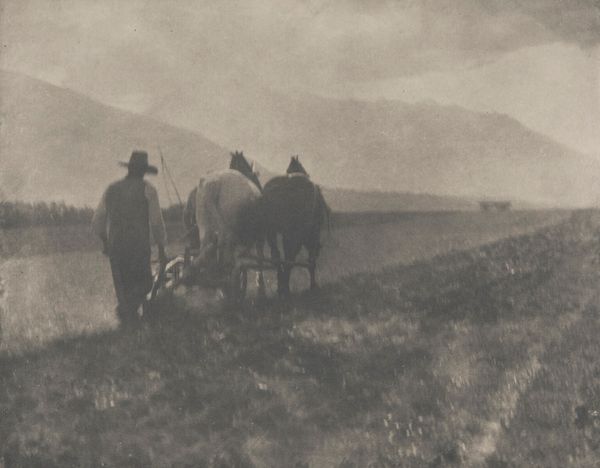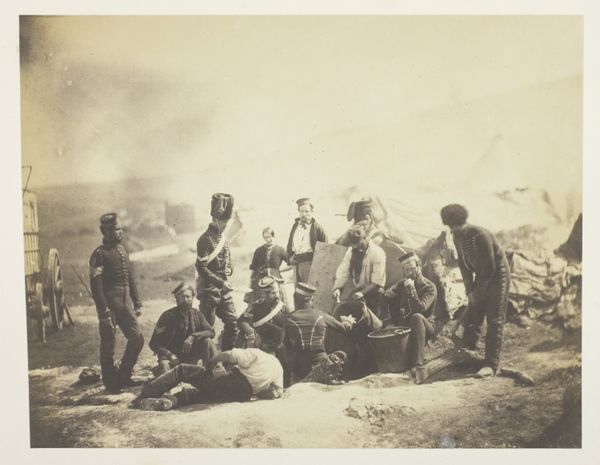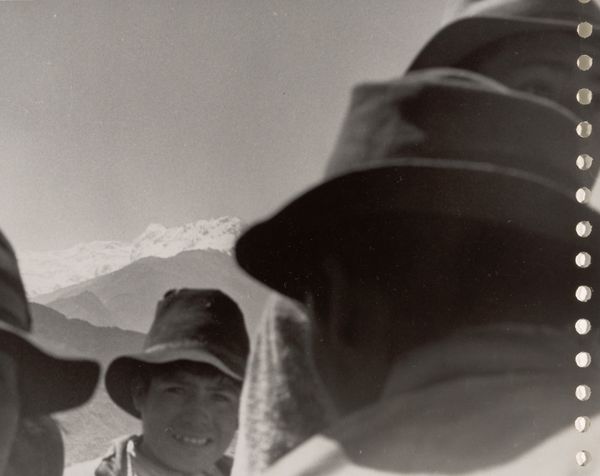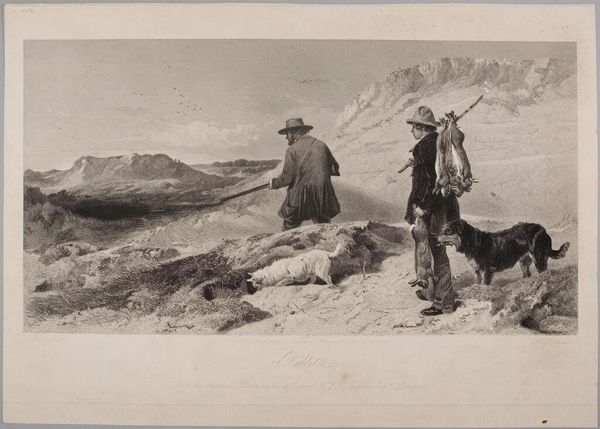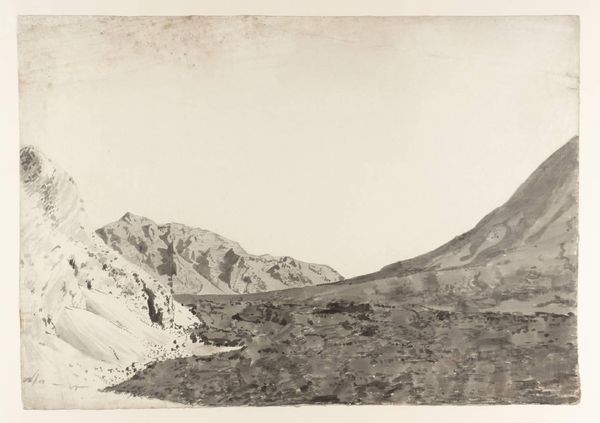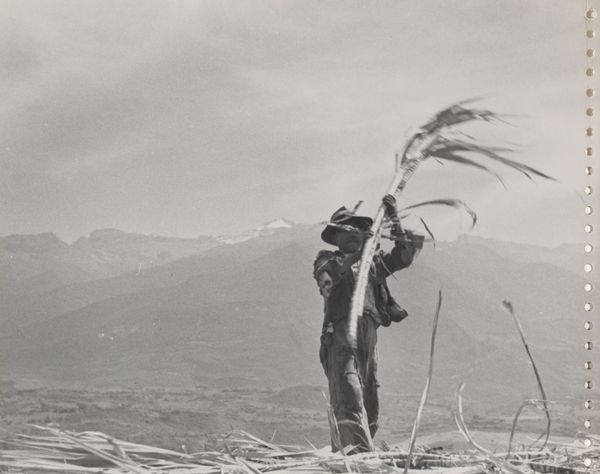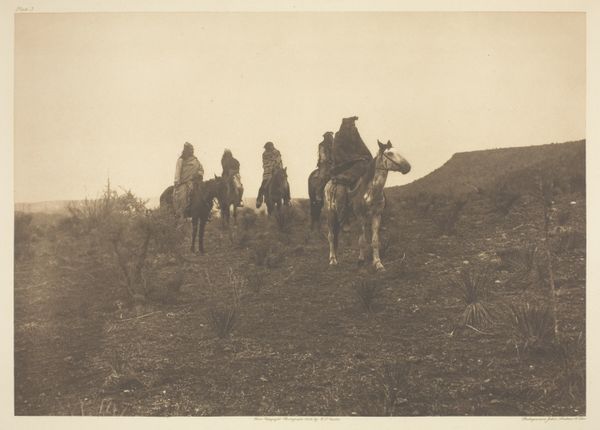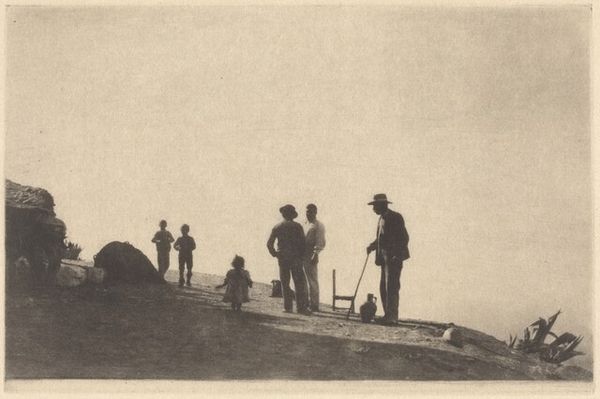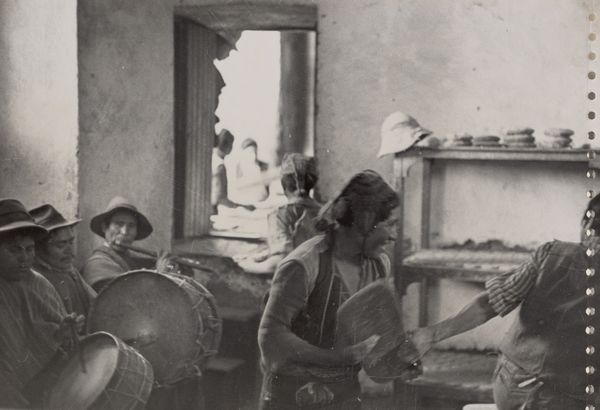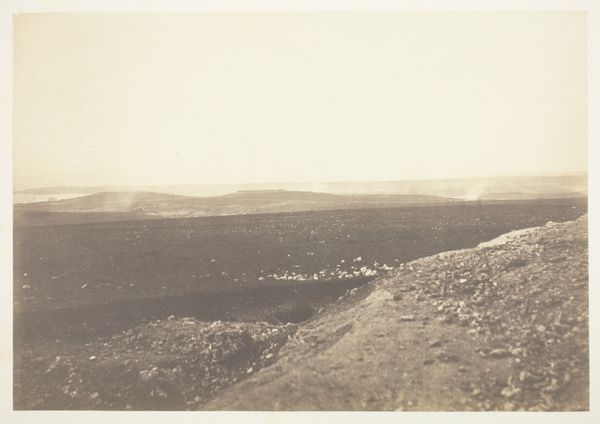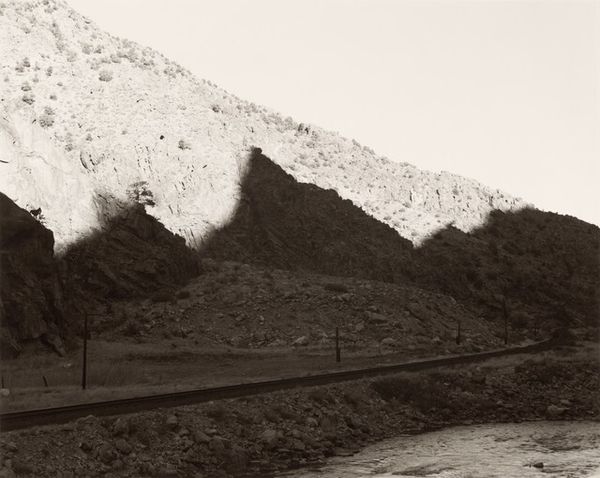
Dimensions: image: 27.3 x 33.2 cm (10 3/4 x 13 1/16 in.) sheet: 27.3 x 38.9 cm (10 3/4 x 15 5/16 in.)
Copyright: National Gallery of Art: CC0 1.0
Curator: This gelatin silver print, titled "Horse and Sun/Peru," was created by Robert Frank in 1948. It captures a scene suffused with an almost cinematic light. Editor: There's something about this photograph, a muted expectancy. The figures in the foreground, framed by their hats and shawls, feel like they’re anticipating something profound, with the mounted figure further along the road under sunbeams evoking destiny, though it could be an impression only. Curator: Precisely. The road acts almost like a visual timeline. Notice how Frank uses light – a strong almost divine shaft breaking through – to pull the eye to the central horseman. Sun worship was and is deeply rooted in Peruvian culture. Frank seems to be capturing something essentially spiritual here. Editor: You’re right; there’s definitely an evocative use of symbolism here. But how do we read the symbolism, historically? Is it reverence or something more complex? Post-colonial photography, especially by foreigners, walks a tightrope between homage and appropriation. Curator: It is difficult ground to be sure, but Frank spent considerable time traveling in Peru and Bolivia. He was not just passing through. Consider the horse too. Horses in South America arrived with the Spanish, and immediately became a symbol of authority and power. The lone horseman represents a tension between traditional life and colonial influence. Editor: Yes, that tension is palpable, especially set against the vast landscape. What strikes me too is the layering – foreground figures, the rider, then the distant hills. This invites the viewer to read it as if observing from behind, to reflect on the scene's context through a specific viewpoint. Curator: Absolutely, and it makes one ponder Robert Frank’s own viewpoint. He's not simply documenting, he's composing a narrative imbued with his understanding. It resonates profoundly today, the dance of power and place through a symbolic gaze. Editor: It's a stark and beautiful reflection, urging us to consider not only the subject but also our place in witnessing their story. Thanks for expanding my perspective today! Curator: And thank you for grounding it in the important context of photographic history. It’s that continuing conversation that makes this so resonant, I think.
Comments
No comments
Be the first to comment and join the conversation on the ultimate creative platform.
